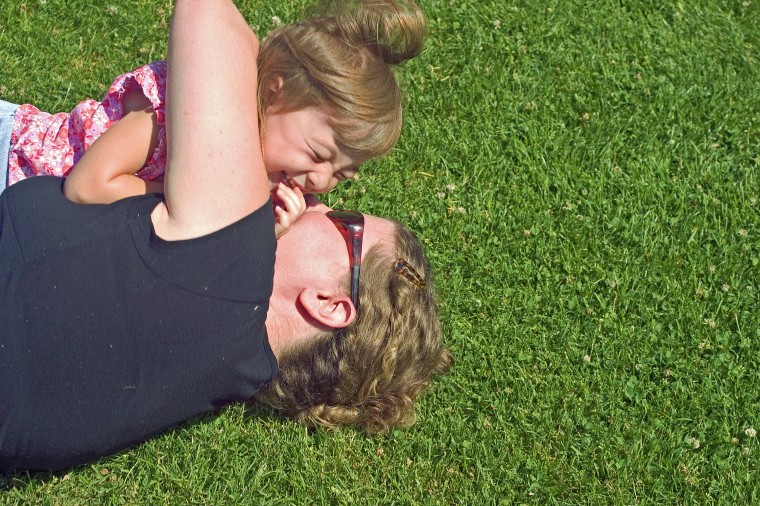Most parents nowadays try not to use physical punishment. Many have been advised instead to use modern child management: timeouts. But any child can explain to you that timeouts are actually punishment.
What’s wrong with Timeouts for children?
On the surface, Timeouts seem sensible. They give everyone a chance to calm down. Supposedly, they teach kids a lesson. Well, I have bad news for you.
 It’s true that timeouts for children are infinitely better than hitting, and yelling. But Timeouts teach the wrong lessons, and they don’t work to create better behaved children. In fact, they always worsen kids' behavior.
It’s true that timeouts for children are infinitely better than hitting, and yelling. But Timeouts teach the wrong lessons, and they don’t work to create better behaved children. In fact, they always worsen kids' behavior.
Why? Because any child can explain to you that timeouts ARE punishment, not any different than when you were made to stand in the corner as a child. And any time you punish a child, you make him feel worse about himself.
Here’s what happens when you use timeouts for children:
1. Timeouts make kids feel bad about themselves. You confirm what she suspected – she is a bad person. Not only does this lower self esteem, it creates bad behavior, because people who feel bad about themselves behave badly.
As Otto Weininger, Ph.D. author of Time-In Parenting says:
“Sending children away to get control of their anger perpetuates the feeling of ‘badness” inside them…Chances are they were already feeling not very good about themselves before the outburst and the isolation just serves to confirm in their own minds that they were right.”
2. Kids need our help to learn to calm themselves. Sure, a child will eventually calm down if confined to “the naughty step” or their room, but what they’ll be learning is that they are all alone with their most difficult feelings and problems. The fastest way to teach kids to calm themselves is to provide a “holding environment” for the child, giving him the message that his out of control feelings are acceptable and can be managed.
3. You’re breaking your child’s trust in you by triggering his fear of abandonment. Banishing an upset child is pushing him away just when he needs you the most. Worst of all, instead of helping him to calm down, it triggers his innate fear of abandonment. If gives him the message that only his “pleasant” feelings are ok, that his authentic, messy, difficult feelings – part of who we all are – are unacceptable and unlovable.
4. Instead of reaffirming your relationship with your child so she WANTS to please you, timeouts create a power struggle.They set up a relationship that pits you and your authority against the child. It’s true that as long as the parent is bigger than the child, the parent wins this power struggle, but no one ever really wins in a parent-child power struggle. The child loses face and has plenty of time to sit around fantasizing revenge. (Did you really think she was resolving to be a better kid?)
5. Because you have to harden your heart to your child’s distress during the timeout, timeouts erode your empathy for your child. Yet your empathy for this struggling little person is the basis of your relationship with him, and is the most important factor in whether or not he behaves to begin with. So parents who use timeouts often find themselves in a cycle of escalating misbehavior.
So timeouts for children, while infinitely better than hitting, are just another version of punishment by banishment and humiliation. To the degree that Timeouts are seen as punishment by kids – and they always are — they are not as effective as positive discipline to encourage good behavior.
So if you’re using them as punishment for transgressions, that’s a signal that you need to come up with a more effective strategy.
And if you’re using them to deal with your kids’ meltdown, that’s actually destructive, as I mentioned, because you’re triggering your child’s abandonment panic. If you want to teach your child emotional self-management, that’s only effective before a meltdown starts. When you realize your child is getting to that dangerous over-wrought place, suggest that the two of you take some “cozy time” – snuggle up and read a book. Some parents call this a “Time IN” because it signals to the child that this is a time to experience his emotions, so he can let them go and move on.
Once the meltdown starts and your child is swept with emotion, it’s too late for teaching. Just stay nearby so you don’t trigger his abandonment panic, and stay calm. Don’t give in to whatever caused the meltdown, but offer your total sympathy and be ready to reassure him of your love.
I want to add that Timeouts for adults are a terrific management technique for keeping your own emotions regulated. When you find yourself losing it, take five. This keeps you from doing anything you’ll be sorry about later. It models wonderful self-management for your kids. And it ultimately makes your discipline more effective because you aren’t making threats you won’t carry out.
Parents who use timeouts are often shocked to learn that there are families who never hit, never use timeouts, and rarely raise their voices to their children. But you shouldn’t need to use these methods of discipline, and if you're using them now, you'll probably be quite relieved to hear that you can wean yourself away from them.
And remember, this too shall pass!
-Dr. Laura Markham of Aha! Parenting
You can learn more about Setting Limits Without Saying “Time Out” here.